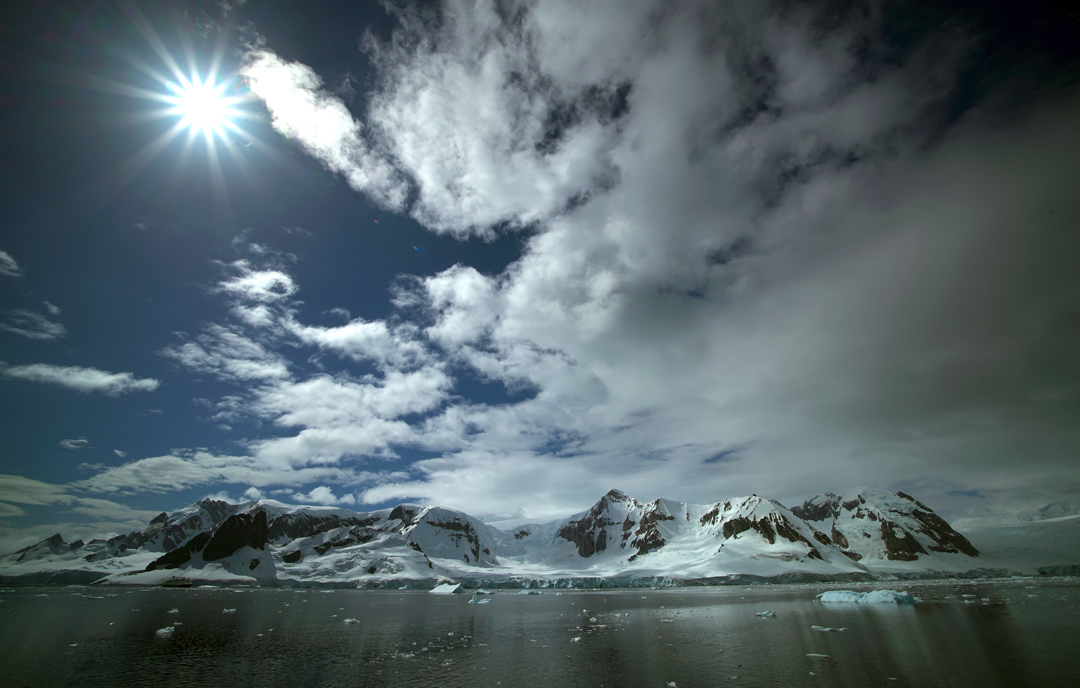Wild Spur Range, Divoka
Antarctica, Antarctic Peninsula, Arctowski Peninsula

The opportunity to visit Antarctica came through Marek Holeček. Peter Hamor and I were in Kathmandu in the spring of 2017 after reaching the summit of Dhaulagiri. We bumped into Marek and he told me that he planned to visit the Antarctic Peninsula at the end of the year in a small sailboat. There were three spare places. "Why don't you come?" asked Marek. I didn't hesitate—this was a chance not to be missed.
This was also my opportunity to launch an unusual new project. Juraj Koren is a top Slovak paraglider but something of a beginner when it comes to climbing; I was a paragliding beginner, but Juraj had proposed, "Teach me to climb and I'll teach to you fly." After a couple of seasons of climbing and flying in the Tatra and Alps, we were ready for something more ambitious, and so Seven Virgin Summits was born. We would try to climb a virgin summit on each of the seven continents and fly down from each by paraglider. The first part of our project would take place on the Antarctic Peninsula.
We sailed from Ushuaia in late December 2017 on the 17m yacht Altego II. It was the most difficult approach to a mountain that I had ever endured; for six days I lay on the lower deck in seasickness delirium.
We made a short stay at the Chilean Base in Paradise Bay, from which we climbed a 600m hill and made our first flight. Next we sailed west to Port Lockroy on Wienke Island, where we climbed an 850m mountain at the northern end of the Wall Range (64°49'10.49"S, 63°21'45.25"W)and flew from the summit. However, during our ascent we found old fixed rope and some pitons, leading us to believe the peak may have been climbed before. In any case, 850m was not good enough for us—we wanted four figures.
We sailed northwest to the Errera Channel, between Rongé Island and the Arctowski Peninsula. There, on the mainland, we spotted a fine summit, the highest peak of the Wild Spur Range. We couldn't find a name or altitude, but we were captured by its symmetrical shape and a fine, logical line of ascent. On January 11, 2018, our skipper ferried Juraj and me by small boat to a beach, from which we spent the next hour crossing a glacier to the foot of the west face. Above us wind was chasing the clouds; we probably wouldn't be able to fly, but at least we could climb.
We followed a direct line up an icy couloir on the left side of the face, finishing with a snowy overhang. The rocky sections were very broken and offered no real possibility of sound protection. After seven hours we exited the face and followed a short snow ridge back right to the summit (64°41'34.67"S, 62°30'28.78"W), where our GPS registered 1,057m. We subsequently named the peak Divoka and the route on the west face Zivot je Life (TD, 90°).
We decided to descend 100m and take off into the wind. Just to be sure of our orientation, I radio our floating base camp and ask for wind direction. The reply was, "the same direction as the boat." We just smiled—we couldn’t see the boat from such a distance. We launched and flew down along the face we had just climbed, landed, made our way to the beach, and called the yacht for a pick-up. Our skipper greeted us with the words, "Guys, I've sailed the world and people say I am insane, but I don't dare think what you are." Half an hour later it was raining. We'd got it just in time.
– Michal Sabovcik, Slovakia





